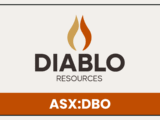
White Cliff Minerals (ASX:WCN) confirms first sediment-hosted copper discovery at Rae Copper Project
August 15, 2025White Cliff Minerals Limited is pleased to provide an update on the recent discovery of sediment-hosted copper mineralisation at the Rae Copper Project in Canada’s West Kitikmeot region.
The company’s Managing Director, Troy Whittaker, discusses the significance of the results from discovery drillhole STK25001, the role of the Herb Dixon Fault, and the strategic steps being taken to expand exploration.
This Q&A outlines the factual details from the current program and explains how the latest developments fit into the broader potential of the Rae Basin.
What is the significance of the sediment-hosted copper discovery at the Rae Copper Project?
Sediment-hosted deposits are among the largest sources of copper on Earth and they are responsible for a major share of global copper production.
This discovery represents a highly significant step forward for the project because it is the first time we have confirmed sediment-hosted copper mineralisation within the Rae Basin.
Our discovery drillhole, STK25001, intersected a broad 16 metre zone of chalcopyrite and bornite bearing sediments from 175 metres depth, along with semi-massive sulphide veining directly beneath that package.
“The position of this mineralisation, sitting above the unconformity with the Husky Creek Formation, is particularly significant because this redox boundary is recognised globally as a strong control in large sediment-hosted copper systems.”
By confirming this style of mineralisation, we have validated our exploration model, strengthened our understanding of the geological framework, and increased confidence in the potential for large-scale copper systems across the Rae Project.
Can you explain the role of the Herb Dixon Fault in this discovery?
The Herb Dixon Fault is a major north–south structure that runs through our property and it has now been confirmed as a copper-fertile fluid conduit.
In STK25001, mineralisation was intersected directly adjacent to this fault, with sulphides present not only in the sedimentary horizon above the unconformity but also in vein systems within the underlying Husky Creek Formation.
“This clearly indicates that the fault has acted as a pathway for copper-rich fluids, which is one of the most critical controls in the formation of these deposits.”
The importance of the Herb Dixon Fault has also been reinforced by surface sampling results from other parts of the property.
Furthermore, by recently extending our landholding to the north, we have secured an area where this main copper conduit intersects a newly identified sedimentary package that contains known copper occurrences, adding to our inventory of high-priority targets.
What are the next steps following this initial drilling success at Stark?
Follow-up drilling is already underway at the Stark target, with step-out holes from STK25001 designed to expand our understanding of the mineralised system.
In reduced facies sediment-hosted copper deposits, the mineralisation is often zoned, with chalcopyrite in more distal areas and bornite or chalcocite closer to the fluid upflow zone.
“Our aim with this phase of drilling is to test along strike and down dip from the initial intercepts to identify any transition into these more proximal zones, if present.”
The Stark target itself is a large, untested geophysical conductor extending over 15 kilometres in strike and 2 kilometres in width, located directly on the Herb Dixon Fault.
We expect the initial assay results from this program during the September quarter, and these results will be used to refine our geological model and guide future drilling across the Rae Basin.
How does the recent landholding expansion enhance the project’s potential?
The addition of approximately 950 square kilometres of mineral claims to the north has strengthened White Cliff’s already dominant position in the Rae Basin and increased our exposure to prospective ground.
This new area captures the northern extent of the Herb Dixon Fault, which we now know is a copper-fertile conduit, and it includes an additional redox boundary within the Upper Rae Group.
The contact between stromatolitic dolomites and overlying sandstones and conglomerates is a geological setting recognised internationally as a strong trap for copper deposition, and although it was first targeted in the 1990s, it has not been tested with modern exploration techniques.
The target units dip gently to the north, offering shallow, walk-up drill opportunities with potential extensions at depth, and our review of historical datasets has already highlighted several high-priority targets, including untested geochemical anomalies and electromagnetic responses, which we intend to evaluate in future field programs.
How does this discovery integrate with other high-grade copper zones already identified at Rae?
The confirmation of sediment-hosted copper at Stark adds another important dimension to what is already shaping up to be a multi-faceted copper project.
At Danvers, drilling has returned world-class intercepts with copper mineralisation extending over 800 metres in strike, and we have also identified a new zone more than 4 kilometres to the southwest.
The addition of sediment-hosted copper above a major unconformity, together with semi-massive sulphides in underlying vein systems, demonstrates that Rae can host multiple mineralising systems across a large and geologically diverse area.
This variety of mineralisation styles strengthens the potential for the Rae Basin to yield multiple copper-bearing systems within a single district, each with its own scale and development pathway, and it underpins our strategy to progress several high-priority targets in parallel.
Building on the Momentum
The confirmation of sediment-hosted copper mineralisation at Stark marks a pivotal moment for White Cliff Minerals as we continue to explore one of the most prospective copper districts in northern Canada.
The combination of the large-scale Stark target, the high-grade results already defined at Danvers, and the recent expansion of our landholding positions us strongly for the next phase of exploration.
Our focus now is on delivering assay results from the current drilling program, refining our geological understanding, and advancing exploration across multiple targets to unlock the full potential of the Rae Basin.
Please note the following valuable information before using this website.
Independent Research
Market Open Australia is intended to be used only for educational and informative purposes, and any information on this website should not be taken as investment advice or guidance. It is important to conduct your own research before making any investment decisions, which should be based on your own investment needs and personal circumstances. Any investment decisions based on information contained on this website should be taken in line with independent financial advice from a qualified professional or should be independently researched and verified.


